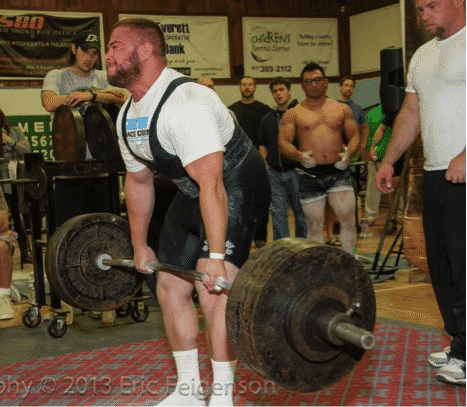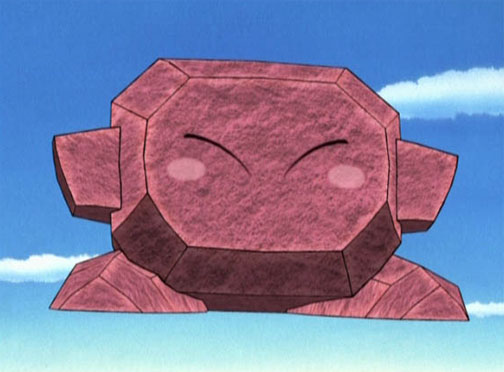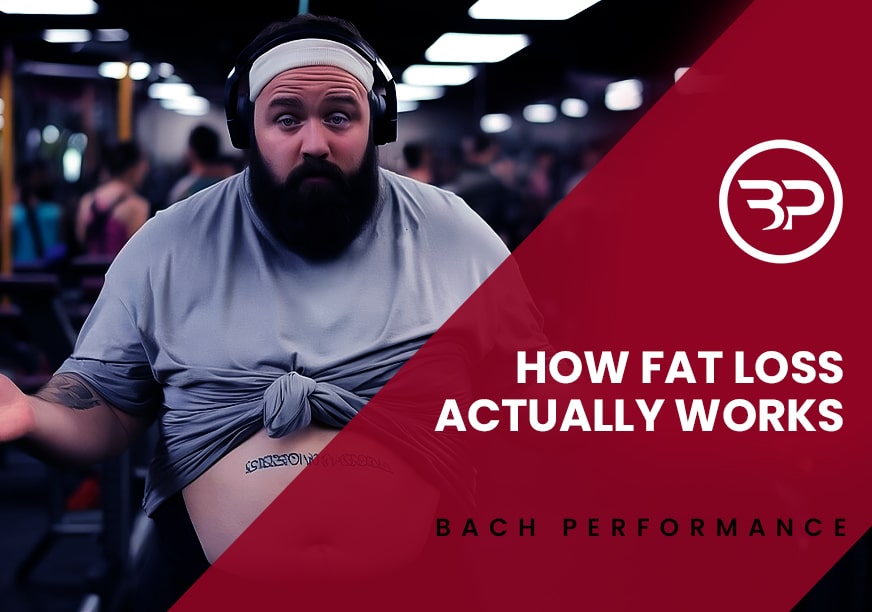5 Simple Cues for a Bigger Deadlift
May 19, 2015
Today’s guest post by Adam Pine, an awesome coach out in Boston whom I had the chance to meet and crush BBQ with in Kansas City at the Fitness Summit.
Not only is Adam a smart dude, he’s extremely strong.
To the tune of bending caste iron skillets with his bare hands,wrestling grizzly bears for conditioning, and deadlifting 700+ pounds.
Okay, the first two are a lie (but I wouldn’t put it past him), but Adam knows his strength, especially as it comes to the deadlift. When he talks strength, we should all listen. Here are his tips to help you pull a bigger deadlift next time you hit the gym.
Great deadlifters can make lifting even the heaviest weights look easy.
It takes these lifters years of practice to gain mastery and perfect their deadlift technique. Experienced lifters have listened to hundreds of cues trying to perfect their form.
Often the right string of word creates a remarkable connection between your mind and body, allowing you to perform a movement seamlessly. However, the same cues aren’t always going to connect and make sense to everyone.
In this article I’m going to follow the basics of the hip hinge, followed by 5 essential cues for better deadlifts. They’ve connected with me and many of my clients.
How To Hip Hinge
If you are learning how to deadlift, you’ll want to learn how to hip hinge. Here are two great cues for learning the hip hinge.
An uncommon one I like is, “Make a hand sandwich.” Simply put your hands on your waist and touch your stomach and thighs together as you push your glutes back to the wall behind you. You’ll feel a nice stretch in your hamstrings as you hinge back.
Another great one I picked up from Ben Bruno is the landmine hinge. This one makes grooving the hinge really easy, as the bar acts as a counterbalance.
Here’s a video of Ben doing Landmine RDL’s. You can do these with or without weight to pattern the hip hinge.
Those are two great tips for getting started. Let’s get into some simple cues for a bigger deadlift.
1. Make your arms long

This is a great cue for both novice and advanced lifters.
It prevents you from shrugging the weight and from deadlifting with bent elbows. Both of which can limit the amount of weight you’ll lift and increase likelihood if injury.
Keep your arms as long as possible to create a short ROM and a better leverage for driving the weight off the floor.
A common cue you hear is to pull your shoulders back and down. This is a good cue for keeping your back flat and creating tension.
Rather than pull your lats into your back pocket or shoulders back and down, make your arms as long as possible. Your arms only act as a rope to connect your hand to your body. Your hand acts as the hook that connects the bar to your body.
Be careful not to reach too far as well. This will cause your back to round and can increase the likelihood of injury overtime. Some great lifters do use this method, but I would not recommend it for most as it can be extremely taxing on the lower back.
[ ]
]
For the most efficient bar path, setup and keep the weight close to you.
The bar should be riding up your body through the entire lift. Start with it close and pull the weight into you the entire time, it should skim your body throughout the lift.
If the bar travels away from your body it will increase lumbar flexion or lower back rounding. As the bar drifts from your body, you see an increase in form breakdown.
That’s why it’s so important to brace effectively and create a ton of tension through the rest of your body.
Common Mistakes: When using this method, do not pull your shoulder blades into your back pocket to create more tension through your lats. You do not want to shorten the length of your arm, let them hang as long as possible.
It also becomes difficult to maintain that position (shoulder blades in the back pocket) with heavy weight. This can cause your shoulder blades to protract or rotate forward as a result causing you to round.
For an optimal setup, make sure to keep your arms long and maintain a neutral spine.
In this video you can see when the weight’s heavier (710lbs) it becomes difficult for me to maintain the lats back and down position.
2. Be immovable
Get as tight as possible. Something we hear all the time. What does this really mean in the context of a deadlift?
Getting tight means you have to brace hard and create tension through your body. When braced you should feel rock solid, like nothing on Earth can move you.
You can brace at the top of the deadlift or the bottom. I’ve done both and I prefer breathing and bracing at the bottom because I don’t have to hold my breath for as long.
Grab the bar and take in a big breath of air – a lot, like your just came up from drowning.
When you take that air, focus on breathing into your lower back and belly. This will fill up the entire area that a weightlifting belt covers.
After that, flex your abs as hard as you can like you’re about to get punched in the stomach.
You should feel completely rock solid and immovable at this point.
You want to maintain your braced position throughout the whole lift. If you have a leak in your brace, heavy weight can expose it.
Common Mistakes: Not breathing, or taking a big breath into your chest or belly only. Try to fill your entire torso with air, beginning with filling the lower back and belly.
3. Your torso and hips should act as a teeter-totter
600 X 4
In the video, I grab the bar and my torso is more-or-less parallel to the floor. I brace and right before I initiate the pull, I drive my chest up and my hips lower like a seesaw.
With your hands on the bar in the bottom position, rock your weight back onto your heels using the bar as a counterbalance so you don’t fall. Your weight is now shifted back, shins are vertical and your hamstrings tense.
As you do this, drive your chest up and lower your hips a bit while finding tension in your hamstrings. You should feel tension throughout your entire body at this point and be ready to explode up with the weight.
This helps to pull the tension out of the bar. Make the bar click before you pull. This creates a smooth transition from setup to driving the weight off the floor.
The next part is simple, lifting the weight.
Common Mistakes: There are two mistakes I commonly see in this area of the setup.
One, the lifter doesn’t pull their chest up at all. Their torso is completely parallel to the floor and their hips are too high making it look like a stiff legged deadlift.
The other mistake is they try to squat the weight. Their chest might be upright, but their hips are too low and they have little-to-no tension in their glutes and hamstrings.
4. Melt your heels through the floor
Drive your heels so hard into the ground that you melt the imprints of your heels into the floor.
Think about pushing the floor away from you rather than pulling the weight off the floor.
This gives you an insane amount of leg drive. It allows you to be extremely explosive while maintaining proper bar path.
This allows you to use your legs to accelerate through the lift rather than trying to pull all the weight up with your back.
Common Mistakes: Using your back to pull the weight off the floor.
Often what happens when you try to pull the weight off the floor is your hips shoot up first and your back rounds. This is puts you in a risky position and a disadvantageous deadlifting position.
Avoid this by simply driving through your heels, using leg drive to explode towards lockout.
5. Crack a walnut between your butt cheeks.
As pass your knees and near lockout, squeeze your glutes together as hard as you can. Think about cracking a walnut between your butt cheeks and humping the bar to lockout.
You want to use your glutes to bring your hips through and lock the weight out without hyperextending your lower back. This allows for a safe and efficient lockout.
Common mistakes: Trying to finish the lift with your back. Many lifters will hyperextend at the lower back to finish the lift rather than squeezing their glutes as hard as possible.
Think about your lower back stabilizing and maintaining position during the movement rather than pulling the weight.
It’s a Wrap
There are lots of great cues out there to help you build a great deadlift. The best ones are the ones that connect with you.
Give these simple cues for a bigger deadlift a go in your next training session to optimize your technique, improving your form to prevent injury, and helping you build a huge deadlift.
About the Author:
Adam Pine is a Strength Coach in Boston, an Elite level powerlifter with a 700+ pound deadlift, and the owner of a rapidly growing online coaching business.

Website: http://www.adampine.com/
Facebook: https://www.facebook.com/adam.pine.9
Instagram: https://instagram.com/adamnpine/
Twitter: https://twitter.com/AdamPine1
Don’t forget to sign up for my free newsletter, and if you have questions on programming, accessory work, peaking for a competition, or coaching inquiries, please shoot me an email at: adamnpine@gmail.com.











[…] 5 Simple Cues for a Bigger Deadlift — Adam Pine, Bach Performance […]
[…] 5 Simple Cues for a Bigger Deadlift via Adam Pine […]
[…] 2. 5 Simple Cues for a Bigger Deadlift, featured on BachPerformance.com […]
[…] Adam Pino […]
[…] It’s the king of all lifts. And if you don’t believe me, let the guys from Bro Science tell you all about it. […]